
In this review, you will learn how to apply the EMA correctly, how it differs from other Moving Average options, how to use the EMA to catch a trend reversal, and why knowledge of working with this indicator is so necessary for successful binary options trading.
What are moving averages (MA) and what are they for
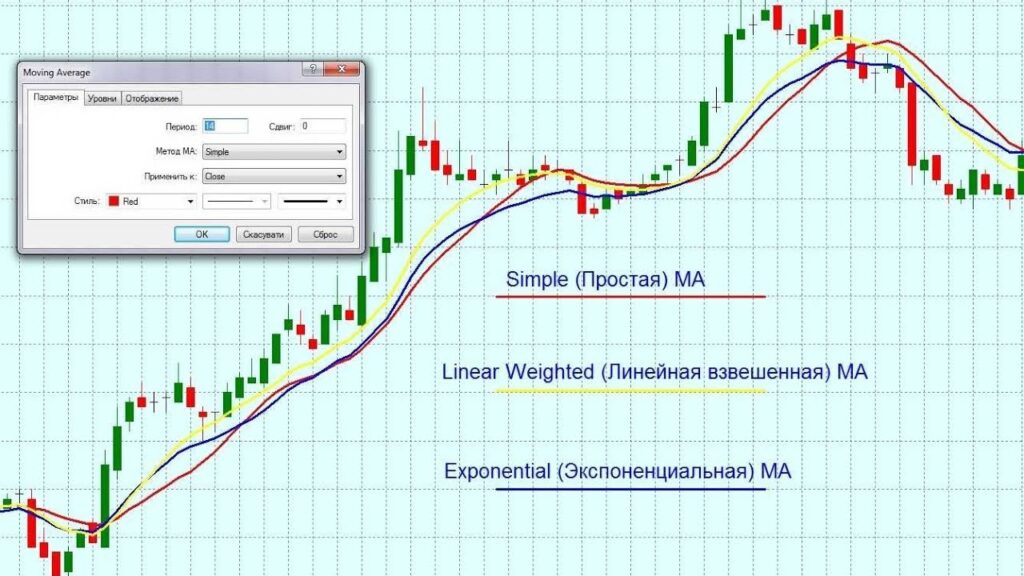
The Moving Average (MA) is one of the oldest technical indicators that remains relevant in any type of market. MA is calculated as the average value of the instrument’s price over a certain period of time, smoothing out price fluctuations and allowing you to determine the general direction of movement.
The purpose of introducing MA into the analysis is to eliminate market “noise caused by random spikes. Moving averages are based on closing, opening, highs or lows prices, depending on the trader’s settings, which allows you to select the most effective option for your own strategy.
Key functions of MA:
- They help you see the main trend during periods of market uncertainty or flat movements.;
- They are the basis for building many other indicators (for example, MACD, Bollinger Bands);
- They contribute to the development of discipline, not allowing you to make impulsive decisions based on emotions.
Types of moving averages
1. Simple Moving Average (SMA)SMA is the basic version of MA, calculated as a simple arithmetic average of prices over a certain period of time. Example: if a period of 10 is set, the sum of the closing prices for 10 periods is taken and divided by 10.
SMA is often used for long- and medium-term strategies. It filters out false movements well, but for active markets it may be delayed in responding to sudden changes in trends.
2. Exponential Moving Average (EMA)The EMA differs in that it gives more weight to the latest prices, reducing the importance of outdated data. Due to this feature, the EMA reacts faster to impulsive market movements and allows you to “catch” the moments of the beginning and end of a trend. Due to its high sensitivity, the EMA is often used to find entry and exit points, particularly in scalping and short-term binary options trading.
3. Weighted Moving Average (WMA)The WMA also “accelerates” the indicator, focusing on recent price changes, but the calculation is carried out using a different formula that distributes the weights more evenly between the new and old values.
A common mistake of newbies: we believe that any MA will give the same picture of the market — in practice, the reaction of indicators varies significantly even with the same period settings. That is why it is important to understand the principles of their work.
Comparing MA and EMA: nuances, pros and cons
Many traders start using MA without realizing how the SMA and EMA react to different market situations. This is a mistake that can be costly in a quick transaction.
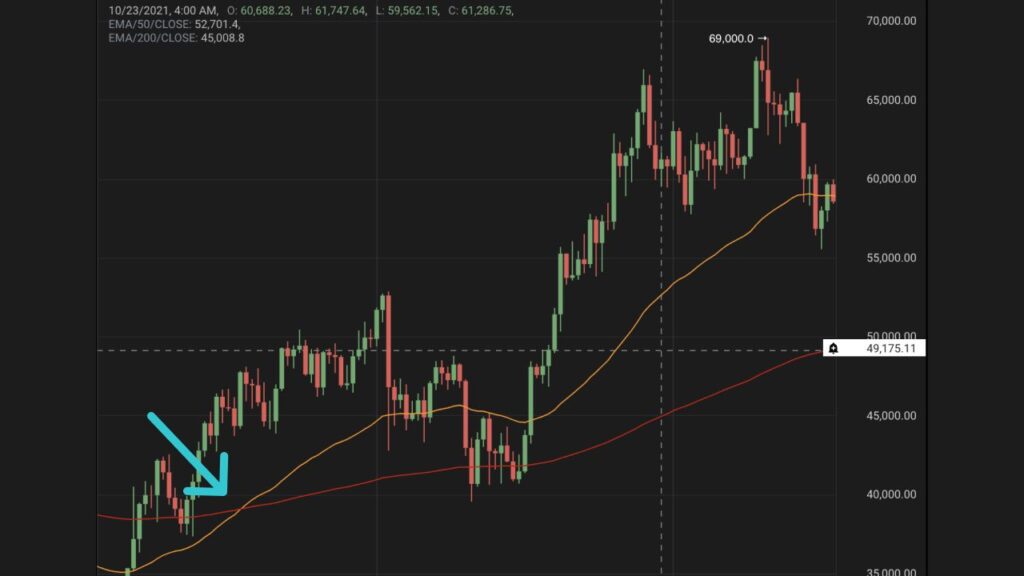
Formulas and sensitivity
The SMA considers all periods equally significant, so it smooths out fluctuations faster and may be delayed when the price reverses sharply. The EMA, in turn, highlights the latest changes on the chart — this is especially true for volatile assets, when delay can mean lost profits or increased losses.
Example: With a sharp rise in the exchange rate of an asset, the EMA immediately “turns up”, and the SMA stretches the reaction by several bars, reducing the likelihood of “catching” the initial moment of movement.
What are the advantages of EMA:
- Excellent reaction speed, especially on reversals and impulses;
- Effective on small timeframes (1m, 5m, 15m) — often used by scalpers;
- It works well in breakdown and rollback strategies.;
- It helps to quickly “filter out” noise and minor fluctuations, highlighting the main trend.
Disadvantages of EMA:
- Strong sensitivity to “market noise” — when flat, it can give too many false signals, especially on short periods;
- It is not always applicable for long-term analysis, where it is necessary to “smooth out” unnecessary signals.
When to use SMA:
- To identify global trends and important support/resistance levels;
- Paired with faster EMAS to confirm or filter received signals;
- To analyze seasonal and fundamental trends in the market as a whole.
The Council: Combine several types of MA to get a more comprehensive signal system.
How to determine a trend reversal using MA and EMA
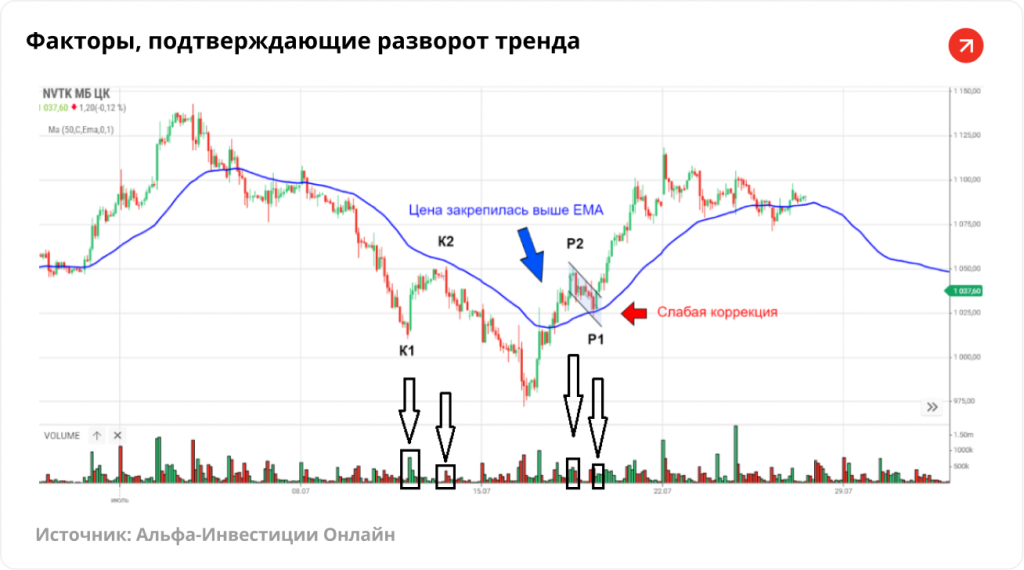
The main advantage of the EMA is the early detection of a trend change in the market, which makes it possible to make decisions not in the “tail”, but “in the head” of the trend movement. This is especially important for binary options because of the limited expiration time.
List of working methods:
- The intersection of the EMA (or EMA and SMA):
When the EMA is fast (for example, with a period of 9) crosses a slow EMA or SMA (for example, with a period of 26) from the bottom up, this is considered a buy/growth signal (CALL). A top-down intersection is interpreted as a sell (PUT) signal and a downward reversal.
- Sliding and price extremes:
If the price deviates sharply from the EMA and forms a peak or bottom, a return back shows that the momentum is complete and it is possible to open in the opposite direction.
- A “ladder” of several EMAS:
If all averages are arranged in a “ladder”, then the trend is stable. As soon as the fast EMA begins to cross with the longer ones, it is worth waiting for the trend to weaken.
- EMA as dynamic support/resistance:
Often, the price is repeatedly pushed away from the EMA. If the level holds, it confirms the strength of the trend; a breakout is a signal for a slowdown or reversal.
Practical advice:Before opening a trade, wait for a confirmation signal, such as a candlestick pattern or an oscillator indicator, to reduce the number of false entries.
A practical example:The trader analyzes the EURUSD on a 5-minute chart. The fast EMA (12) crosses the EMA (26) from below, and over the next 10-15 minutes, the price is steadily rising. When crossing back, it closes the deal and fixes the profit.
The principle of returning to the average and dealing with volatility

Returning to the average is the key idea behind most moving average trading strategies. Market prices can deviate significantly from the EMA, but it is the average line that often pulls the price back.
How to use:
- With strong growth (deviation of more than 2 ATR from the EMA), the probability of correction to the average line increases sharply.
- In a growing trend, the EMA supports the price, giving support for new purchases until a breakdown occurs.
- In consolidation, the EMA acts as an axis of symmetry: breaks above and below are often worked out by returning to the “middle”.
This allows you to use “mean reversal” strategies — trade for a return to the EMA after excessive/extreme price movements, filtering trades using oscillators (for example, RSI or Stochastic).
Newbie Mistakes:Waiting for an instant return to the EMA after the price deviation. In practice, returns can take a considerable amount of time, especially in trending markets. Use additional filters!
Practical application of EMA in binary options: techniques and secrets

The EMA is one of the most flexible indicators for option trading. Here are some ways to integrate it into strategies.:
EMA settings
- Short-term trades (expiration up to 15 minutes): EMA 9-14 (the shorter the period, the faster the reaction).
- Medium—term EMAS are 21-50, for perceived trends without excessive noise.
- Long—range – EMA 100 or more; used to filter the global direction.
Strategies with EMA:
- Crossing the EMA and the price:
If the price steadily breaks the EMA up, it is a signal to enter the CALL; if the price breaks down, it is a signal to enter the PUT.
- A combination of EMAS of different periods:
The classics are EMA 8 and EMA 21. When the fast EMA crosses the slow one up, it is the beginning of an upward momentum. A downward intersection is the beginning of a downward movement.
- EMAS and oscillators:
EMA signals are most effective in combination with RSI or Stochastic — a reversal is more likely at overbought/oversold moments.
Take profit and stop loss:In binary options, a stop loss is not necessary, but if you are working with classic positions, use the EMA levels as “dynamic” stops, and move the position along the trend beyond the EMA.
Additional professional advice:
- Use the EMAS of different periods in order to understand the large structure of the movement (for example, EMA100 for the H1 trend and EMA14 for the entry to M5).
- For “fast” assets (cryptocurrencies, oil, gold) try to choose shorter EMA periods — these instruments are more sensitive to impulses.
- If there is a divergence between the price movement and the slope of the EMA, it is time to prepare for a reversal.
- In sideways markets, most EMA strategies work worse – reduce the volume of positions or wait for the trend.
Set several EMAS on the chart, for example, EMA 10, EMA 21, EMA 50. If they are arranged in a “fan”, the price moves above all of them — the trend is bullish, look for signals only on the CALL. If under all, the signals are only on the PUT.
Advanced methods of working with EMA
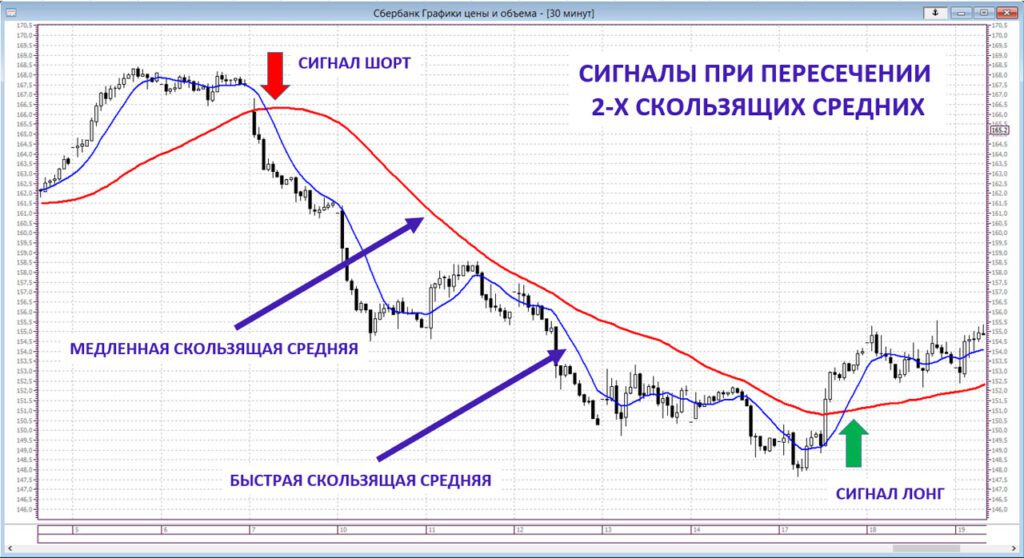
The EMA can be used to “catch” scalping movements if you set a period of 5-9 and expiration of 1-2 minutes. But remember, the shorter the EMA, the more “noise” and potentially false inputs there are. Accelerating EMA is ideally combined with Price Action (for example, the “absorption” pattern + intersection of EMA 10).
The “EMA Bounce” strategy:The price is trending and regularly “pushes off” from the EMA. The rebound from the EMA coincides with the formation of a candle, for example, a “pin bar” — the signal is amplified. Use such entry points with minimal risk.
EMA as a trailing stop:Traders in classical markets place a stop when the price moves along a trend slightly below (or above the short) the EMA line, constantly moving it after the indicator.
Trading “false breakouts of the EMA”:Sometimes the price breaks through the EMA and immediately returns back — countertrend traders use this to enter in the opposite direction, but the strategy requires strict filtering of false signals.
EMA in combination with other indicators
- MACD:
Based on the difference between two EMAS, it is great for confirming a reversal and trend strength.
- Bollinger Bands:
The EMA is the central line of the indicator; going beyond the bands followed by a return is a working signal for options.
- Parabolic SAR:
It filters the inputs set by the EMA well, especially in trending areas.
The subtleties of choosing and configuring an EMA
- In highly volatile markets, use shorter EMA periods. In “quiet” markets, you can extend the period for more smoothing.
- Choose the EMA parameters that are “linked” to your timeframe. EMAS 7-14 are suitable for M1—M5; 21-50 for H1—H4.
- Regularly test the strategy on the history (backtest) and adjust the settings for the changed volatility.
- Analyze the EMA in conjunction with the volume to eliminate false spikes.
- Do not open deals on the EMA in the absence of a pronounced trend.
- Follow the news — in times of strong news releases, the EMA may “lag” or cause sudden movements.
- Complement the analysis with risk management aspects: determine the size of the transaction in advance, do not risk more than 2-5% of the deposit on one signal.
The most common mistakes when working with the EMA
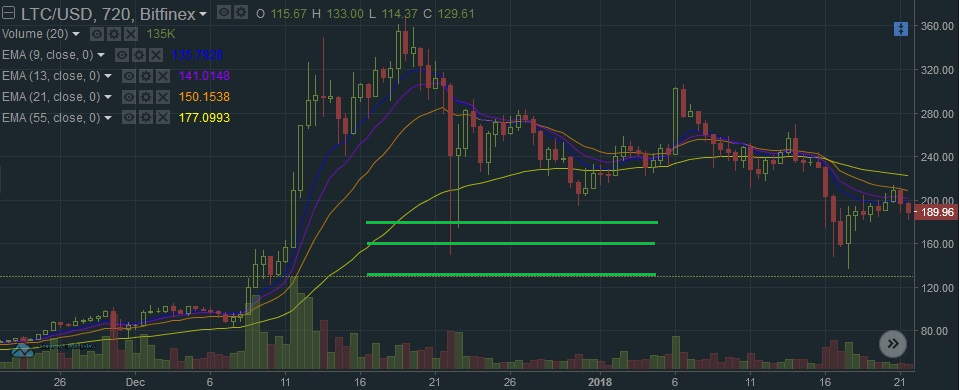
- Using the same period for all assets — each tool “likes” its own setting.
- Entering a trade only with an EMA signal without supporting factors (for example, a level/pattern).
- The constant “twisting” of the indicator in the sideways markets.
- The expectation that the EMA will always work perfectly is only a part of the trading system, not its replacement.
EMA is a “hard worker”, not an “oracle”. Its purpose is to save you time searching for a trend, but not to predict it exactly to the point. Use the EMA to build a system, not guesswork.
Conclusion
Using the EMA indicator is a real step towards systematic and successful trading, especially if you work with rapidly changing binary options assets on reliable and functional platforms. By understanding the nuances of the EMA and learning how to combine them competently with other tools, you will be able to independently identify powerful trading signals, filter market noise and build winning strategies.
It is convenient to practice and compare your solutions directly on Pocket Option — here all the necessary schedules work without restrictions, and numerous functions allow you to bring the settings to perfection. And if you want to develop professional skills and communicate with like—minded people, the best way is to join the Trading Academy: here you can ask questions about real transactions, complete training and keep up to date with all relevant market tactics. Get started right now ― the experience and knowledge of working with EMA will become your competitive advantage in the market!


